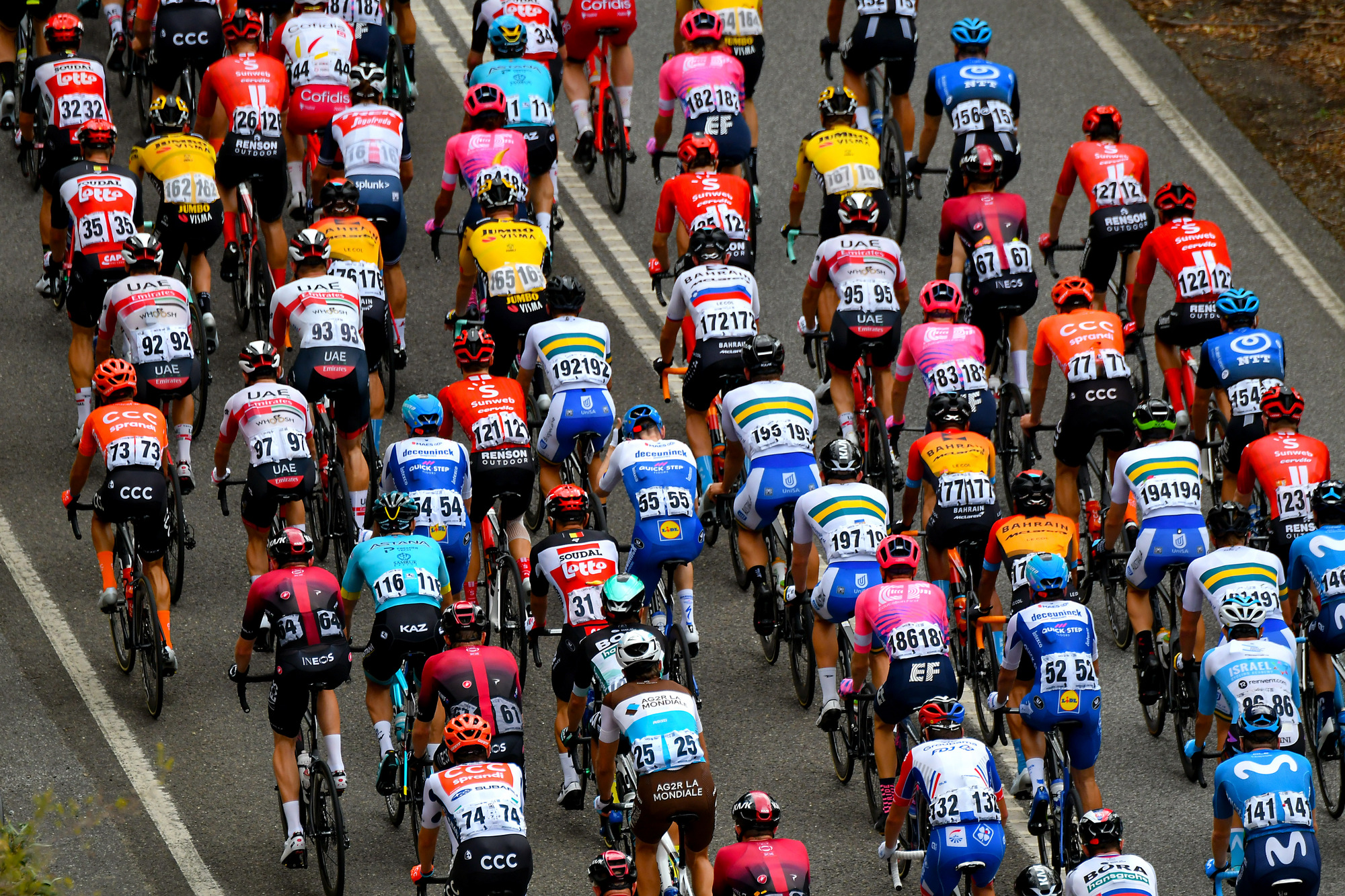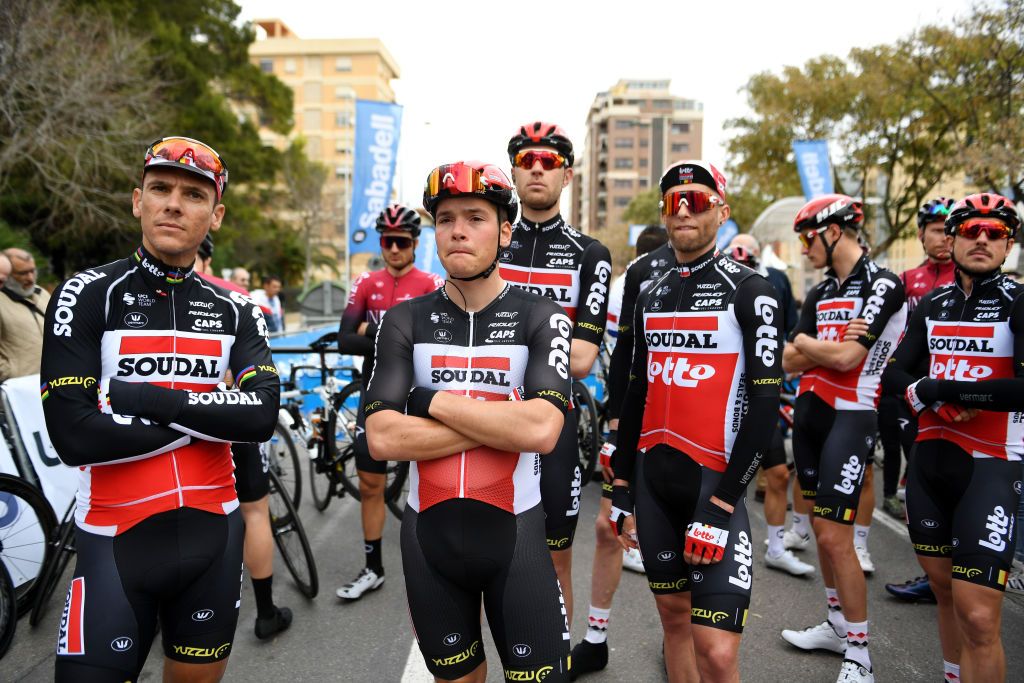Revealed: UCI's COVID-19 monitoring plans highlight cardiac risks
UCI make recommendations for group riding and training camps

The re-starting of the 2020 race season remains far from certain, but the UCI has sensibly set the wheels in motion with plans to improve health conditions for riders and staff as outdoor training resumes and the possibility of training camps increases.
Some of mainland Europe remains under various levels of lockdown, but most riders hoping to race in August as part of the UCI's new-look calendar now have the chance to train outside.
When the UCI announced its reformed race calendar, it also began to envision new rules and regulations to protect the riders and race entourage. Cyclingnews has gained a copy of a preliminary version of the UCI's first round of recommendations for training and riding in groups. The document does not cover racing or competition.
The document is the result of work carried out by the UCI Medical Director Professor Xavier Bigard. According to the document – which has been sent to Cyclingnews – the mission is to define "the conduct to be adopted, in particular concerning health (social distancing, blocking gestures and other measures) for the resumption of the season".
The 15-page paper does not go into detail surrounding the health checks that would be required during competition but it is nevertheless an important stepping stone on the road to any possible resumption in racing.
The letter stresses from the start that the proposals made "should be considered as being able to evolve rapidly depending on new knowledge", and stem from the fact that scientists around the world are still learning about the coronavirus: its prevalence in the population, what percentage of infections are asymptomatic, if an infection sparks lasting immunity and the physical risks to those infected with SARS-CoV-2 that can potentially include damage to the heart, lungs and other organs in severe cases.
Not much is known about possible health effects of the virus on elite athletes – for those with asymptomatic cases or more severe forms. The UCI has proposed a decision-tree of questionnaires and medical check-ups that would be carried out for athletes at the end of the lockdown phases as they ease back into outdoor training and then group training activities – for instance, altitude camps that often take place in the build-up to Grand Tours, like the Tour de France.
Get The Leadout Newsletter
The latest race content, interviews, features, reviews and expert buying guides, direct to your inbox!
The recommendations centre on reducing individual risk and reducing the risk of the spread of the virus within a team. They also highlight the challenges, such as the lack of a vaccine and the number of potential asymptomatic cases.
Resumption of training
Under the guidelines, riders would answer a questionnaire on their COVID-19 history: if they were in contact with someone with a confirmed case, if they were tested by PCR (to detect a current infection) and/or a serologic test (to check for immune evidence of a past infection), and if they were or are infected, what symptoms they had. Only riders who meet the criteria required – and show no symptoms – will be allowed to pass to the next phase of a full medical assessment.
Riders who are not suspected of having COVID-19, or who have not come into close contact with others carrying the virus, can immediately start training.
The letter recommends that for any athlete with a confirmed or suspected case of COVID-19, "it is imperative to stop all sporting activities". Riders who have recovered from a symptomatic case will need further evaluation.
The second step is a mandatory full medical examination, which would replace the usual third-quarterly examination that UCI teams must conduct on their athletes. Alongside the medical examination is a set of biological testing – similar to the checks that riders undergo at the start of every season. These tests include blood and urine tests, which would flag any problems with the kidneys or liver, and cardiological examinations to check heart function.
Heart of the matter
The recommendations highlight the possibility that the SARS-CoV-2 virus can cause an inflammation of the heart muscle called myocarditis – a very serious condition that can linger undetected and lead to sudden death during exercise.
The paper stresses that any rider with a confirmed or suspected infection with COVID-19 should at the very least undergo electrocardiogram testing.
If any abnormalities are detected, or if the COVID-19 case came with mild to moderate symptoms, further testing to rule out damage to the heart tissue would be required, and if the rider had been hospitalised due to COVID-19, they may need a cardiac MRI to pick up any abnormalities.

The paper also stresses that riders who have had severe cases of COVID-19 that required hospitalisation "must not return to normal training outdoors before the end of the medical check-up" and that: "In the event of abnormal examination, the riders will be cared for by a specialized medical team."
Resumption of outdoor training
The UCI advises riders who are beginning to train outside to undergo 'health monitoring', which includes weekly reports submitted with their teams, monitoring of heart rate during training and rest, and twice-daily temperature checks. If a rider notices any abnormal symptoms, they must be reported immediately to their team doctor, with training ceasing immediately.
Group risks and training camps
Most of the UCI's document centres around the first step for individuals looking to race at a later stage, but also looks down the road at when group riding will be allowed.
The UCI makes clear that "it is important to verify 1) that all people who join the group are not carriers of the virus, 2) the immune protection status of the group". The governing body also highlights that these two points also take into account team staff, such as directors and mechanics.
The UCI make a series of non-mandatory recommendations: testing for active COVID-19 infections 7-8 days before the first gathering, and a second test 5 days later. Only riders testing negative both times should be allowed to participate – the recommendation is caveated by the possibility of false negatives.
The UCI then goes on to cite the Belgian droplet study by Blocken et al for distancing during training camps. In addition to the usual physical distancing measures off the bike, on the road, "a significant distance must be maintained between the riders", they write.
Riders side by side should be at least 1.5m apart, but the Blocken study suggests a distance of 20m or more for those riding single file. The paper suggests riders keep more distance from riders in front than 1.5m and, "if possible, to set up training groups according to the immune status (while also recalling that our knowledge is still fragmentary on this topic). Thus, group training could be allowed within a group of immune riders".
On the matter of face masks, the letter states: "Wearing face masks is justified and is achievable for staff members and athletes who are not immunized, during submaximal exercises. It should be recalled, however, that wearing a face mask is justified to avoid contamination of other people, and mainly when the physical distancing cannot be maintained."